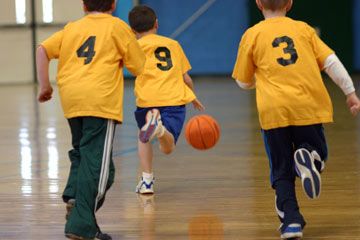Golf is a difficult game to teach anyone, so if you want to teach your children you're going to need a game plan. It's a sport that requires concentration, patience and discipline, and you'll need all three to keep your youngsters interested. The key is making it fun for them. Golf can be frustrating for even the most experienced players, so when it comes to your kids, try your best to keep it frustration free. If they have smiles on their faces, chances are they'll want to keep coming back to the course.
If you're an avid golfer, then you know how important the mechanics are -- you have to have the right swing, the right stance and the right grip. You've probably spent countless hours trying to perfect all three, but when it comes to teaching your kids how to play, you can throw all that out the window. Just make it fun -- that's the number one rule of teaching your kids to play golf. Don't worry about teaching them the proper way to hold a club. Just make sure they're having fun trying to figure it out on their own, and eventually they'll want to know how they can get better. Let them dictate the pace of their learning [source: Rotella].
Advertisement
Another way to make golf more fun for your kids is to shower them with constant praise and encouragement. There's no such thing as a bad swing when a 4-year-old is holding a golf club, and there's nothing wrong with doing a little dance when your little one sinks a putt. Try taking your kids to the golf course toward the end of the day when it's less crowded -- they'll be able to treat it more like a playground and you won't have to worry about annoying other patrons [source: Miller].
Of course, no matter how fun you make it, your kids will eventually have to learn the rules of the game. Keep reading to find out how you can teach them.
Advertisement


